Perth Travel Guide
Most of the two and a half million people who live in Western Australia reside in the sophisticated and scenic state capital. Perth grew on the banks of the Swan River, named after the Scottish city of the same name, and was proclaimed by Queen Victoria as a city in 1856. The discovery of gold in Kalgoorlie and Coolgardie, to the east of the city, in the 1890s led to a dramatic rise in its population and an economic boom. Another boom followed in the 1960s courtesy of iron ore and nickel.
Today the city is characterised by numerous waterways, green parks and a compact central business district. There is plenty to occupy visitors in Perth, including touring the city by tram or bus, enjoying water sports on the Swan River, or just sipping a glass of the famous local wine in a riverside or beachside restaurant. Perth is said to have more restaurants per capita than any other Australian city. Not far from the city is Western Australia's oldest wine-growing region, Swan Valley, which welcomes tourists to visit the many award-winning family-owned wineries, which offer alfresco and restaurant meals and cellar tastings.
Perth is also the site of the world's oldest operating mint, and boasts several museums and art galleries, historic buildings, a casino and a good variety of shopping opportunities. Last, but not least, the city offers more than 50 miles (80km) of white sandy beaches. Among the most popular are Cottesloe and Scarborough.
Things to do in Perth
Sunbathe, indulge in some wine tasting, shop for pearls, wander the waterfront of Fremantle, or visit the funfair. These are just some of the many diversions that draw people to enjoy a holiday in Perth, Australia's laid-back, remote western city, which is surrounded by some stunning scenery, including lovely, sandy beaches.
Perth is packed with attractions to suit everyone, especially food-lovers, who will find more restaurants here per capita than in any other Australian city. With an abundance of fascinating local wildlife and landscapes on its doorstep, Perth has plenty to offer families travelling with kids.
Pristine sandy beaches mean there's hours of fun in the sun to be had on Perth's family beaches, such as Cottesloe Beach and Leighton Beach, but be sure to pack plenty of sunscreen as the Australian sun can be ruthless. Another great outdoors option is the Kings Park and Botanic Garden where visitors can hike, bike or just relax in the shade with a picnic.
The Perth Zoo is the perfect place for animal lovers, while the Aquarium of Western Australia is not to be missed either. The Museum of Childhood is great for kids.
The Perth Sightseeing Pass is useful for those planning to do a lot of sightseeing, and parents should grab a copy of The Parent's Paper, free every month, for ideas on attractions and events for kids.
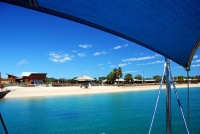
Monkey Mia Resort
At this remarkable resort, situated near the town of Denham, about 525 miles (830km) north of Perth in the Shark Bay Heritage area, visitors have the opportunity to interact with and even hand-feed the local wild dolphins who visit the shore each day. Several bottlenose dolphins regularly visit the beach at Monkey Mia, sometimes up to three times a day, while others who are less tame wait just offshore. Visitors are encouraged to enter the water to gently touch and feed the dolphins, under the watchful eye of local rangers who advise on how best to approach and handle the animals without causing them stress. Monkey Mia also has a Dolphin Information Centre, and offers good bathing at Shell Beach, unique in that it has a four-mile (6km) stretch of tiny white shells stacked up to 33ft (10m) deep. Some of the buildings in the nearby seaside town of Denham are built out of shells from this beach.
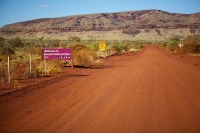
Karijini National Park
Karijini is the second largest national park in Western Australia, situated in the Pilbara region. It features breathtaking gorges, crystal clear rock pools, waterfalls and stunning scenery. A system of walking trails designed for hikers of various levels of fitness, from beginner to experienced, have been laid out. There are picnic and camping areas and a visitor information centre with interactive natural and cultural displays. The park boasts 50 varieties of Acacia, Eucalypts and Melaeluca in its gorges, 133 types of bird and 92 species of amphibians and reptiles, not to mention the dingoes. It is situated about 900 miles (1,435km) north of Perth on the Great Northern Highway. Numerous tours into the park operate from Tom Price, Port Hedland, Karratha and Auski.
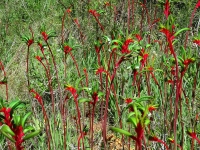
Wildflower Region
The mid-west section of Western Australia is known as the wildflower region, particularly between late July and early September after the seasonal rains, when the spectacular fields of yellow, pink and white everlasting daisies emerge. The most popular site for wildflower viewing is the Kalbarri National Park, which boasts about 800 species of flowering shrubs. The park is 370 miles (590km) north of Perth near the mid-west town of Geraldton and can be accessed by car from the North West Coastal Highway. A bus service also runs three days a week from Perth to the Kalbarri National Park. World-renowned botanists, photographers and film-makers visit the region for the flowers, particularly around the Eneabba and Arrowsmith River areas. The mid-west is also rich in history and offers visitors a variety of outback experiences and coastal activities.
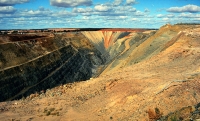
Goldfields
Goldfields, to the east of Perth, is a region steeped in history and legend, where visitors can see relics of the gold rush and the mines that have made the area famous. It is possible to tour the Super Pit, Australia's biggest open-cut-mine, which is an impressive sight at more than 853ft (260m) deep, one mile (2km) wide and two miles (4km) long. The Super Pit can be found at the edge of the city of Kalgoorlie-Boulder. It forms part of the 'Golden Mile', reputedly the richest square mile of gold-bearing earth in the world. The total amount of gold recovered from the Super Pit between 1989 and 1999 was incredibly over five million ounces (142-million grams), and the total is still growing. From the lookout near the Pit visitors can watch trucks carry rock up to the refinery from the bottom of the pit, and sometimes witness carefully controlled mine blastings.
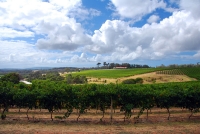
Margaret River
Southwest of Perth, the Margaret River Region is an area characterised by dairy farms and wineries set within a picturesque landscape, and is Western Australia's most popular holiday destination. The area was initially discovered by surfers, but now holidaymakers of all kinds head here by the thousand for the tranquil atmosphere, clean beaches and excellent restaurants, often attached to wineries. The area also has more galleries, craft studios and potteries than the rest of the state put together. Margaret River is also well known for its many caves, some of the best of which are open to visitors and feature extraordinary formations. The spectacular show caves are called Jewel, Lake, Mammoth and Moondyne, with Moondyne offering a thrilling three-hour exploration tour.
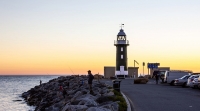
Fremantle
Despite having been absorbed into Perth's urban sprawl, Fremantle, affectionately known as 'Freo', retains its own strong identity and is a popular destination for day-trippers from Perth. Its harbour was built in 1903 by CY O'Connor, who also constructed the Goldfields pipeline before killing himself on a beach near Fremantle. A bronze statue in CY O'Connor's honour stands in front of the Fremantle Port Authority. The harbour of Fremantle, which is still functionally a separate city rather than part of Perth, has been substantially revamped in recent years and is now filled with outdoor bars and restaurants and has a laid-back, arty character. Freo is a creative, interesting, little port city that has retained a distinct character, and has considerable allure for visitors.
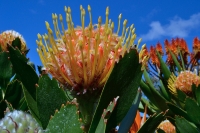
Kings Park and Botanic Garden
Comprised of more than 400 hectares (988 acres) of parkland and gardens, Kings Park and Botanic Gardens is one of Perth's most popular attractions for locals and tourists alike. Set on Mt Eliza, the park offers breath-taking views over the city and Swan River, while more than 80 species of birds can be found enjoying the indigenous bushland. Kings Park also features the State War Memorial, the Royal Kings Park Tennis club, and a reservoir, and the streets of the park are lined with trees, each with plaques dedicated to Western Australian men and women who died in WWI and WWII. Kings Park is the perfect place for a relaxing afternoon picnic, sightseeing, walking, cycling or just exploring the various lookout points. During the summer months (December to February), the park hosts a number of events such as outdoor concerts, moonlight cinema and the Kings Park Wildflower festival each spring.
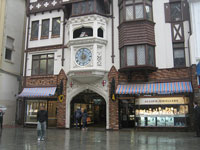
London Court
Built in 1937, Perth's London Court is set among modern skyscrapers in the heart of the city. The small pedestrian 'street' is located between the Hay Street Mall and St Georges Terrace, and is reminiscent of the Tudor style buildings of England. Walking through London Court, visitors can experience the charming small shops and cafés as well as the clocks on either end of the lane. London Court is brimming with dozens of small details, which can be easily missed, such as the statues of Sir Walter Raleigh and Dick Whittington, weather vanes, and stairways leading to fantastic viewpoints looking out over the court. London Court is a little taste of England in Australia, making the colonial heritage of the country clear, in a very aesthetically pleasing way.
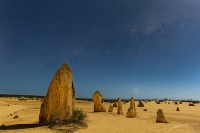
Nambung National Park
Located in the Swan Coastal Plain, just 150 miles (245km) north of Perth, the Nambung National Park is home to one of Australia's most incredible natural attractions, the Pinnacles Desert. One of the Seven Natural Wonders of Oceania, the Pinnacles Desert consists of thousands of limestone pillars, protruding from the yellow desert sand in a variety of shapes and sizes (some reaching 3.5 metres in height). It is a truly unique sight, unlike anything visitors will ever seen before; an unearthly, unforgettable landscape, best viewed in September and October, when wildflowers bloom, adding colour to the vast desert expanse. Nambung National Park also boasts white-sand beaches and marine life, and picnicking, swimming, fishing, and snorkelling opportunities, making it a stone-cold 'must-see' attraction in the state of Western Australia.
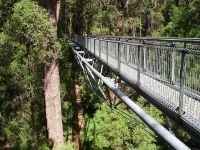
Valley of the Giants Tree Top Walk
A wonderful example of nature-based tourism, the Valley of the Giants Tree Top Walk is a must for outdoor enthusiasts of all ages. The 0.4 mile (about 600m) walk takes place along a specially-constructed boardwalk, 130 feet (40m) above the forest floor, and winds through the heart of a massive karri and tingle tree forest, where walkers are literally surrounded by the forest canopy, in the company of true giants. The walk has a gentle gradient, allowing access for wheelchairs and strollers, and connects with the Ancient Empire boardwalk, a cleverly-designed pathway that brings the grandeur of the 400-year-old trees into sharp relief. Opened in 1996, the Valley of the Giants Tree Top Walk has already thrilled millions of visitors in its short history, a concrete testament to the uniqueness of the experience it offers.
Getting Around
Perth has a very efficient and convenient public transport system called Transperth, which operates buses, trains and ferries. Passengers can hop from one to the other on a single ticket, and obtain information on all the services at booths set up for this purpose at strategic points such as Plaza Arcade, the railway station and bus stations. Buses in the central area are free, covering a number of colour-coded routes, while suburban bus services and trains link to the outer districts day and night. Ferries operate on the Swan River; fares are based on zones and tickets can be bought from newsagents and vending machines. Metered taxis can be hailed in the street in Perth, found at taxi ranks or booked by telephone. All major car hire companies are represented in Perth and driving in the city poses no problems. Cycling is a popular way to get around, and there are numerous designated cycle routes.
Perth Climate and Weather
Perth has a Mediterranean climate, with hot, dry summers and cool, wet winters. In summer (November to March) temperatures average between 58F (15C) and 88F (31C), occasionally reaching as high as 105F (41C). Luckily the sea breeze known as the 'Fremantle Doctor' somewhat tempers the heat. Rainfall during this period is low, with an average of only three to four days each month receiving rain. Winter in Perth (June to September) is cool without getting unpleasantly cold, generally staying between 46F (8C) and 68F (20C). This is the wettest time of year, with roughly half the days in each month getting rainfall. Tropical cyclones do hit Perth, however this is very rare.
Australia travel info
Electricity
Electrical current is 230 volts, 50Hz. Three-pin flat blade plugs are used but are different to those in most other countries, so an adapter is normally required.
Language
English is the official language of Australia.
Money
The unit of currency is the Australian dollar (AUD), which is divided into 100 cents. Credit cards are widely accepted and ATMs are freely available throughout the country. Banks and bureaux de change exchange most foreign currencies. Banking hours are generally 9.30am to 4pm, Monday to Thursday, and 9.30am to 5pm on Friday, but some banks offer extended hours and some are open on Saturday mornings.
Tipping
Most service providers in Sydney don't expect a tip, so travellers shouldn't feel pressured into giving one. A tip of 10 percent is standard in restaurants, however, and passengers usually round up to the nearest dollar or more in taxis.
Health
A yellow fever vaccination certificate is required by travellers over one year of age arriving within six days of having stayed overnight or longer in an infected country. No other special immunisations or medications are required for most trips to Australia; however, insect repellents are strongly advised because of the risk of mosquito-borne illnesses. Another health risk is sunburn, and visitors are advised to take precautions. Medical services are excellent but can be expensive, so travellers should ensure that they have adequate insurance. Australia has a reciprocal health agreement with the United Kingdom providing for free hospital emergency medical treatment; proof of UK residence is required.
Safety
The crime rate in Australia is low; however, travellers should be aware that tourists could be targeted by petty criminals. Visitors should be vigilant about personal possessions and travel documents, particularly in popular tourist destinations such as along the Gold Coast. Tropical cyclones normally occur between November and April in some parts of Australia, particularly in Western Australia, Queensland and the Northern Territory. There is a serious risk of bush fires in summer (November to March), especially in Victoria, Tasmania, New South Wales and ACT. Also during the summer months, the shallow coastal waters of northern Australia and Queensland become infested with marine stingers, commonly known as box jellyfish, whose sting is highly dangerous and can be deadly. Visitors should pay attention to signs on beaches and follow the instructions of local lifeguards to avoid injury.
Local customs
Generally an informal attitude, in dress and behaviour, prevails in most social and business situations. Sport, particularly rugby and cricket, is almost a religion in Australia.
Doing business
Those doing business in Australia are sure to find that the friendly yet professional corporate atmosphere of the country will provide them with an exciting opportunity to develop their careers. The business culture of Australia is a bit of a hybrid breed, incorporating the trappings of British formality and conservatism, the egalitarian ethos of Scandinavian countries, and the dynamic, innovative approach to business that is generally thought of as American in origin - rounded out, of course, with typical Australian warmth and humour. The approach to management in Australia is consultative, pragmatic, and strictly non-hierarchical. Those in positions of relative power are accorded respect by virtue of their personal qualities, not simply because they happen to be the boss.
Business etiquette in Australia further reflects this egalitarian ethos. Business people should use titles initially, though they will almost certainly be told to dispense with them and refer to their colleagues by their first names. They should maintain eye contact when speaking to their associates, as this is regarded as a sign of forthrightness and trustworthiness, qualities that Australian business people tend to favour over showiness, self-aggrandisement or empty promises. Business meetings in Australia should be scheduled about a week in advance, and then confirmed a few days before they are due to take place.
Colleagues should be punctual, as lateness can be seen as a symptom of flakiness or indifference. Business meetings in Australia do not generally proceed from a set agenda. Rather, they are viewed as open forums, in which ideas are to be debated and discussed. In fact, over-preparing for a meeting can make participants seem pushy, as though they wish to bully others into adopting their opinions on the issue at hand. The dress code for business in Australia remains surprisingly traditional: dark suits and ties are the norm for men; for women, business suits, worn either with pants or a skirt. As a general rule, business people should avoid loud jewellery and accessories, as to Australian eyes they might make them seem arrogant. The official language of business in Australia is English, and business hours are generally from 8.30am (or 9am) to 5pm (or 5.30pm), Monday to Friday.
Duty free
Travellers to Australia over 18 years do not have to pay customs duty on 2.25 litres of alcohol; and 25 cigarettes or 25g of cigars or tobacco products. All tobacco products in travellers' baggage are included in this category, regardless of where they were purchased. Gifts are included in the A$900 duty-free allowance. Fresh produce and animal or plant products are prohibited.
Communications
The international dialling code for Australia is +61. Hotels, cafes and restaurants offering free WiFi are widely available; purchasing a local prepaid SIM card can be a cheaper option than paying international roaming costs, which can be quite high.
Passport & Visa
A valid passport and a visa or ETA is required for travel to Australia. An ETA is an electronically issued and verified visa, not visible in a passport. ETAs are issued to passengers travelling for touristic or business purposes. Tourist ETAs are usually valid for three months. ETAs are obtainable online at: www.eta.immi.gov.au or through most travel agents. It is highly recommended that passports are valid six months after departure from a holiday destination.
Entry requirements
US nationals must have a valid passport on arrival. A pre-obtained Electronic Travel Authority (ETA) is required for stays of up to three months.
UK nationals must have a passport valid for intended period of stay. A pre-arranged Electronic Travel Authority (ETA) is required for stays of up to three months.
Canadian nationals require a passport valid for intended period of stay. A pre-arranged Electronic Travel Authority (ETA) is required for stays of up to three months.
South African nationals must have a passport valid for at least six months after their date of departure. A visa is required.
Irish nationals must have a passport that is valid on arrival. A pre-arranged Electronic Travel Authority (ETA) is required for stays up to three months.
New Zealanders require a valid passport on entry to Australia. A Special Category Visa (SCV) is issued on arrival after completing a passenger card.
Useful contacts
Australian Tourist Commission, Sydney: +61 (0)2 9360 1111 or www.australia.com
Emergencies: 000 (112 on cellphones)Embassies / consulates in other countries
Embassy of Australia, Washington DC, United States: +1 202 797 3000.
Australian High Commission, London, United Kingdom: +44 (0)20 7379 4334.
Australian High Commission, Ottawa, Canada: +1 613 236 0841.
Australian High Commission, Pretoria, South Africa: +27 (0)12 423 6000.
Australian Embassy, Dublin, Ireland: +353 (0)1 664 5300.
Australian High Commission, Wellington, New Zealand: +64 (0)4 473 6411.
Embassies / consulates in Australia
Embassy of the United States, Canberra: +61 (0)2 6214 5600.
British High Commission, Canberra: +61 (0)2 6270 6666.
Canadian High Commission, Canberra: +61 (0)2 6270 4000.
South African High Commission, Canberra: +61 (0)2 6272 7300.
Embassy of Ireland, Canberra: +61 (0)2 6214 0000.
New Zealand High Commission, Canberra: +61 (0)2 6270 4211.



